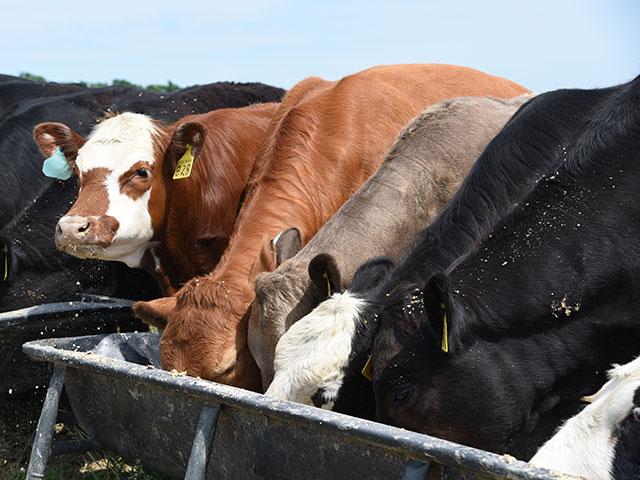Bad Bales Hurt Breed-Back
Effects of Poor-Quality Hay Could Be Far-Reaching
Hay isn't just expensive these days, in many areas it is also lower in quality and overall nutritional content. And bad bales are costly in more ways than one.
Derrell Peel, Oklahoma State University Extension agribusiness livestock specialist, told a group of Missouri producers at their 39th annual forage conference that poor-quality hay is robbing cow herds of nutrients and producers of profits these days. That's the kind of news that hits home in a state like Missouri, which ranks second in the nation for hay production and third for beef production.
According to the USDA's National Agricultural Statistics Service, hay stocks nationally dropped to their lowest numbers in 2022 since the 1950s. That makes this a "waste-not, want-not" kind of season not just in some states but nationally.
When it comes to hay waste, University of Missouri Extension livestock specialist Andy McCorkill says unrolling a large, full bale, or even dropping one into a hay ring before the herd cleans up can contribute to waste. And that's something no one can afford, especially when feed costs account for 60% of a beef cow enterprise.
McCorkill follows five tips that can help producers better manage the feed side of the business. They include: (1) testing and weighing hay before buying; (2) asking how old the hay is; (3) purchasing by the ton, not the bale; (4) matching stocking rates with hay supplies; and (5) knowing your herd's nutritional needs.
SUPPLEMENTING AND IONOPHORES
And don't forget that all hay bales aren't equal -- either in nutritional content or in density. Varying sizes, densities, and most importantly, quality mean a bale's true value can be all over the board. McCorkill said buyers need to know how hay has been stored and for how long. After that, he advises they get a test.
P[L1] D[0x0] M[300x250] OOP[F] ADUNIT[] T[]
"Take a look at the hay, and get it tested before signing on the dotted line," recommends McCorkill. "The lower the nutritive quality, the more supplementation will be needed, and this adds to winter feed costs."
When it comes to supplementing, the specialist told DTN that without a hay test, a producer simply has no baseline to know what to supplement or even if he needs to supplement. Assuming the need is there, in his area, McCorkill said producers look mostly to byproduct feeds like distillers grains, soy hulls and corn gluten feed to supplement hay.
"No. 2 corn helps with the energy side if you can afford it," he added. "But byproducts are a nice, nutrient-dense fiber source, and they work with grazing without the gut upset. So, you can add those pretty easily."
In addition, he tells producers to consider the use of an ionophore, something he said is as close to a free lunch as you can find today.
"In grazing animals, an ionophore, a monensin type, (Rumensin) is what we look to," he told DTN. "Research tells us it improves feed efficiency so that we see about 10% more out of the same amount of feed. We don't talk a lot about using this in the cow herd, but it works there just like in young cattle."
McCorkill knows the decision to supplement or to add that ionophore can be a hard one, even when cattle prices are good. His calculations over the winter have held pretty consistently that it's costing producers in his area about $3 per day to carry a cow with hay and supplements.
SEPARATE THE HERD
It's important to feed the best hay to the cows that need it most, and that means sorting. McCorkill said he likes to keep spring- and fall-calving cows in separate herds. One group is at the peak of its nutritional needs when the other is close to the bottom.
Producers with poor hay resources need to be especially careful to prevent females from losing body condition going into breeding season.
"If we burn fat off the back, it can affect breed-back. Body condition is what triggers the cow to start cycling after they calf. It tells them the environment is acceptable to breed back. If there's not enough fat in that post-partum interval, we don't get good breed-back," he explained. He doesn't like to see cows get below a 4 to a 5 on body condition. And he stresses this is especially important on those first-calf heifers.
"First-calf heifers are still growing. They need a little extra TLC to compensate for that. I like to keep them separate from the mature cows at least through their second breeding season.
"These cattle are more apt to lose body condition quicker, so we really need to be aware of what's going on with them. It can happen to cows too, though, especially coming out of a year like we've had. I'm seeing a lot of cows thinner after calving than what is normal right now."
Victoria Myers can be reached at vicki.myers@dtn.com
Follow her on Twitter @myersPF
(c) Copyright 2023 DTN, LLC. All rights reserved.





